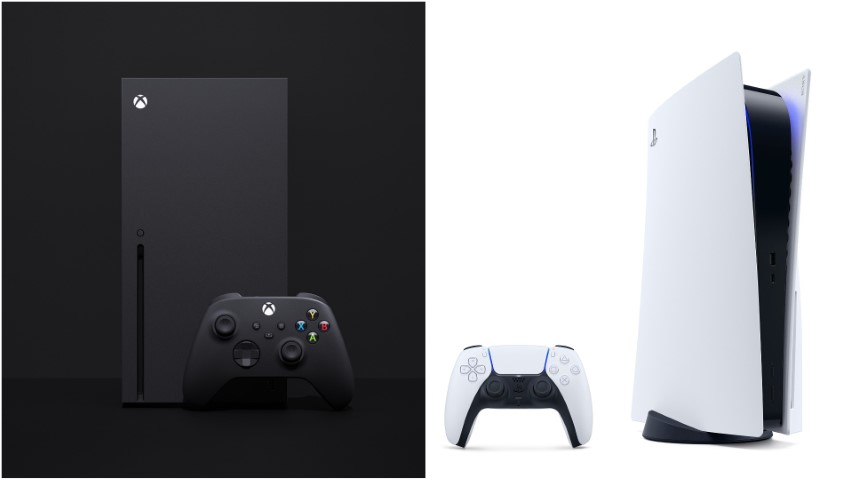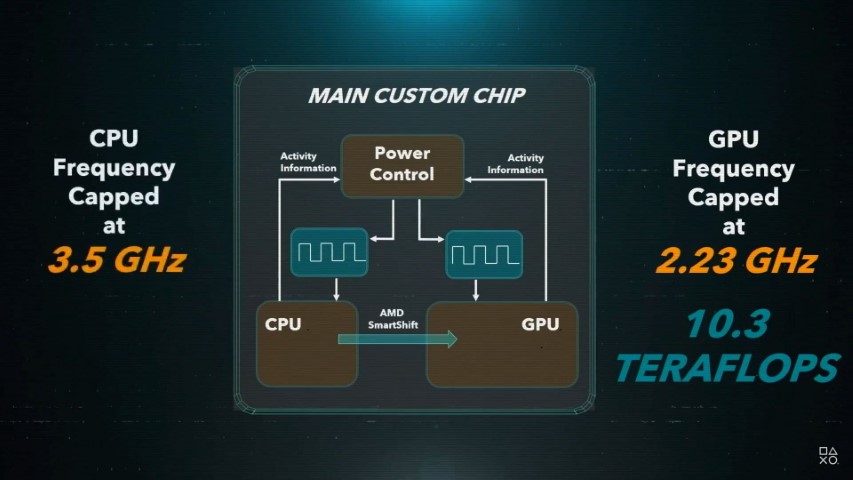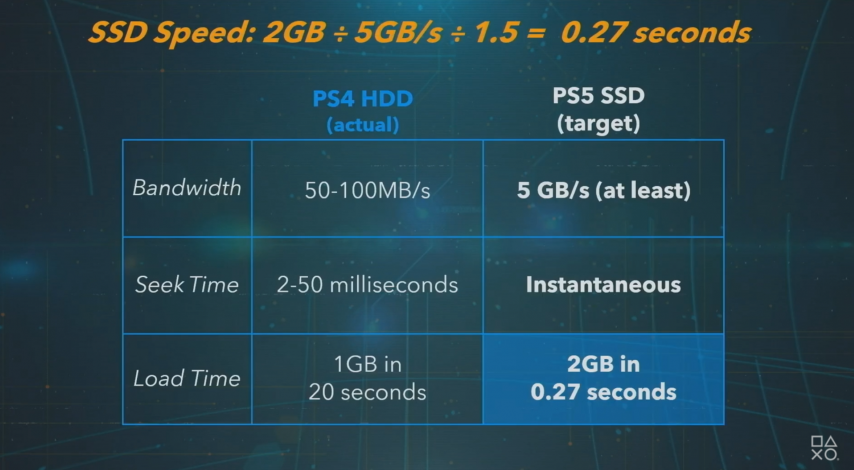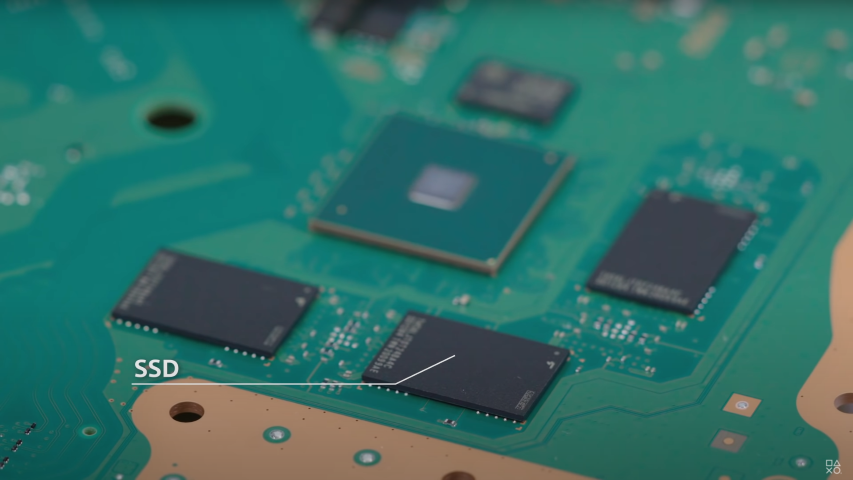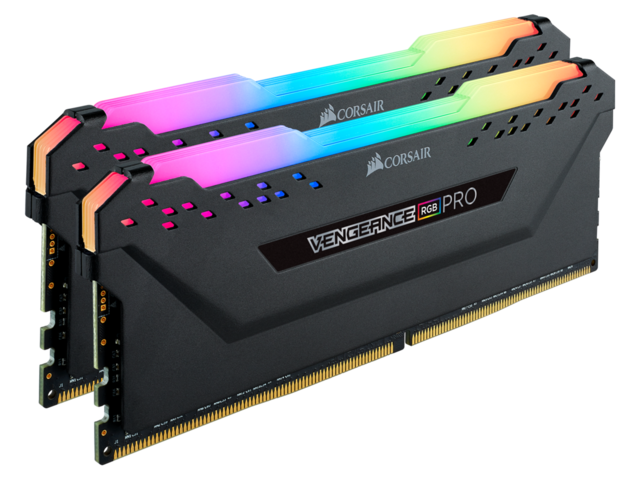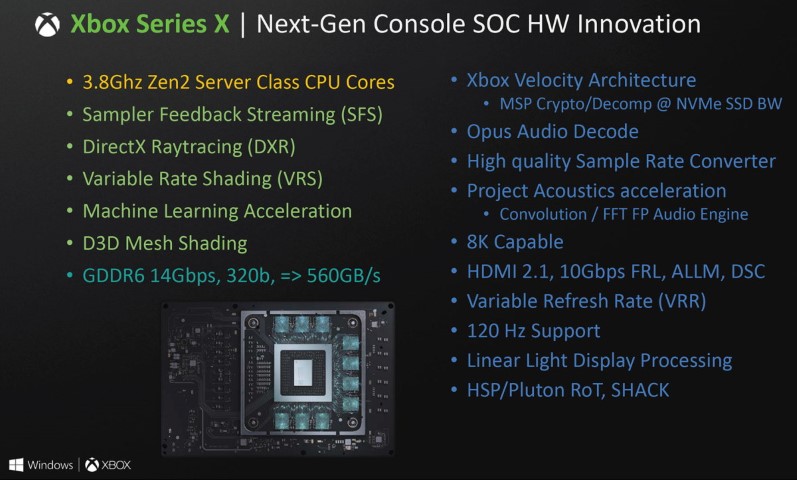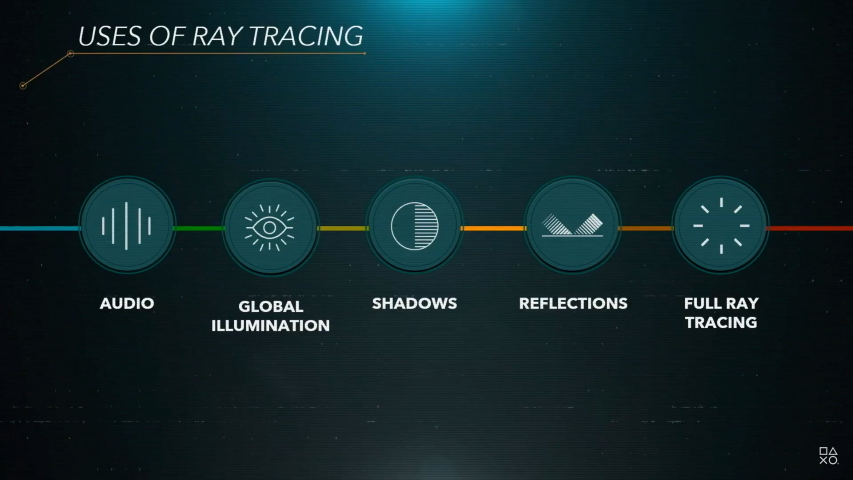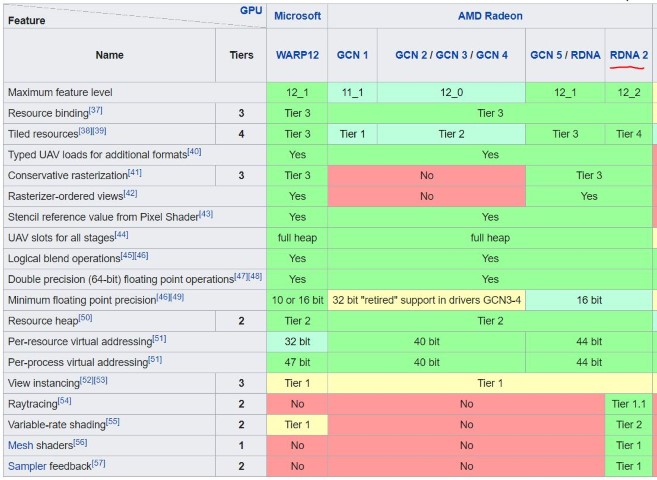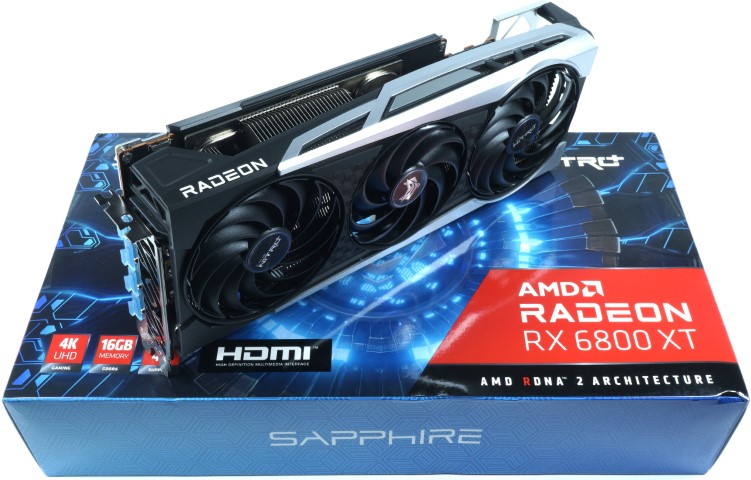
It took over half a decade, but the new consoles are finally upon us. While their supply is for now limited, they are here to stay and will slowly replace the older generation of PlayStation and Xbox devices. One thing is unclear though –what kind of impact will the release of these new consoles have on PC Gaming? Let’s see if we can make some educated guesses in today’s article.
Let us start off with the one thing we are certain about – the hardware. We know exactly what parts are in the new consoles and have a very good idea on where they stack in terms of graphics, processing, and storage speeds.
The biggest two changes are definitely to the central processing unit (CPU) and the solid-state drive. Let’s start this rundown with the CPU.
The CPU?
Both consoles have a powerful 8-core 16-threaded Zen 2 CPU. This means that the closest equivalent to the consoles’ CPUs’ in terms of architecture, is the Renoir-based AMD Ryzen 7 4750G. There are 2 key differences though:
- The consoles’ have lower clock speeds overall.
- They use GDDR6 memory instead of the lower-latency CPU-optimized DDR4 memory.
This means that while they share an architecture with the 4750G, they are still a bit weaker overall. Compared to the Ryzen 7 3700X, the difference is larger still due to its massive L3 cache advantage over the consoles. It seems that the Ryzen 7 2700X is a closer fit for the console’s performance tier, which is still very impressive. That CPU is definitely a monster and represents a prodigious improvement over what the PS4 and Xbox One had – it is several times faster in both single and multicore speeds.
While the new consoles are still fresh, they will eventually become the standard, the basic level of hardware that game developers target. I suspect that due to the way games on the PC are designed, 8 cores / 16 threads of a decent enough level will eventually become the “minimum” for PC Games too. Console operating systems are optimized exclusively for gaming, so it will take a PC CPU that is significantly faster to guarantee superior performance, at least in the long-term that is. Honestly, at the moment PC Gamers should not waste their time and money “futureproofing” since this is still at least 2 years out, and by then even more powerful and/or cheaper PC parts will be available, but it is still interesting.
The current minimum tier of CPU that I predict will always be more powerful than the PS5 and Series X, no matter the optimization by console developers, seems to be Ryzen 9 5900X. That monster may very well outlast the whole generation – but it too will eventually lose to the future Ryzen 5s’ so there is no need to get it right now for just pure gaming that is.
What is more important however, is what this CPU improvement means for video game design. The old generation PlayStation 4 and Xbox One saw a generation of extremely beautiful games, but the truth is that they were often limited by what the CPU could do. Extremely complex artificial intelligence, ballistics calculations, advanced world and physics simulations were really hard, though not impossible on those machines. The new consoles do not necessarily mean that we will suddenly see advanced AI and physics or less static and more interactive worlds – but it does remove the hardware limitations and excuses for sure.
What about the SSD?
Well, previous generations of consoles did not have SSDs – they had to rely on slow hard drives for their storage. Yes, it was possible to upgrade those consoles with an SSD manually and it did indeed improve the experience but it was not a standard feature.
This means that these new high-speed PCIE4-level SSDs are a monumental upgrade. Usability, system responsiveness, the sheer act of using the device have improved. Developers can use these SSDs alongside the mighty CPUs to increase world size, design on more clutter and details, and ensure that more complex and audacious games can be made. This can be a real game changer as current AAA titles are sometimes slightly neutered in size or complexity just to not crush the poor old-gen consoles. Sony even says that their SSDs would be fast enough to be used in real-time and eliminate loading screens or even act as some sort of cache; loading the world as the player is turning! Though possible, it is unlikely for the SSD to be used in such a manner, even if its so fast, it would be irresponsible to use it like that when even faster GDDR6 is available.
In 2021, I expect that most PC Gamers will be using SSDs, at least on their main drive, however the reality is that only a few Gamers have equivalent or superior storage to what the consoles have. Pretty much only high-end PCIE4 devices can compete with them, for now, and those are fairly expensive and require AMD’s B550/X570 chipsets or Intel’s upcoming chipset to be fully functional. There is some silver lining here – no matter how game developers start using this extremely fast storage, PCs can have a lot more RAM and VRAM. Depending on how video games are made, they may end up being fine with even very slow storage as long as the system has a lot of RAM or VRAM. A computer with 32 GB of DDR4 and a 16 GB GPU like the SAPPHIRE NITRO+ RX 6800 XT would not need to be reliant on their storage speed, at least in terms of game performance (system usability notwithstanding).
Of course, just like with the CPU – this does not mean that all PC Gamers should just abandon their current rigs and buy a high-end PCIE4 device and/or 32 GB of DDR4. This will take time to manifest and by the time it is really needed – new standards like DDR5 or perhaps even PCIE5 will be out and will be quite a bit faster or compress the price of current DDR5 and high-end SSDs to the point where it would be easy for PC Gamers to make the jump.
What about memory?
In terms of memory, the consoles are offering a far more modest jump – a simple doubling compared toold devices. To top it all off – there is a spanner in the face of the Xbox Series S that has slightly more memory than what the basic PS4 or Xbox One had. Still, more memory is more memory and with the new console’s target of 4K gaming or 1080p/1440p gaming (Xbox Series S) there will be an increase in how much RAM and VRAM is needed on PC.
One very important thing has to be understood about the consoles though. Their memory is shared and they also have an OS. A PlayStation 5 or Series X both have 16 GB of GDDR6 memory, similar to one of SAPPHIRE own RX 6800 or RX 6900 series Graphics Cards. There is a difference though – the PlayStation has to use some of its memory for its operating system. It also has to actually run the game world with this memory too, those animations and characters or worlds aren’t free. It will never ever have its full 16 GB to use as system memory nor as video memory.
In the here and now, only 3-4 games actually use more than 16 GB of RAM and the vast majority actually use between 5 and 11 GB of RAM. This is at Ultra settings even, which tend to be somewhat decadent. For video RAM, only around 9-11 games actually truly use more than 8GB of VRAM to the extent that more memory or tech like HBCC will help them and that is again at Ultra settings and 4K! Of course, if one is modding, VRAM and RAM will see much higher use, but we are talking only about the stock, basic AAA or AA games. I do expect PC Games to eventually use more than 16 GB of RAM and more than 16 GB of VRAM on their Ultra settings, which tend to be much higher than what the consoles would be running, but it won’t be happening anytime too soon.
GPU
Both new consoles have powerful custom RDNA2-based GPUs. This is closest to the architecture fueling the powerful AMD Radeon RX 6000 series, and while there are some differences here and there, the broad strokes are indeed the same.
The PlayStation 5 has a highly clocked “lean” GPU with very high geometry and a beastly Raster operations pipeline. The Xbox Series X relies on a not quite as lean, but rich on bandwidth and powerful on compute RDNA2 implementation. Both are very powerful, with the PlayStation 5 being somewhat above the AMD Radeon RX 5700 XT in pure power, while the Xbox is some 10-15% above that even! Of course, both are much weaker than an RX 6800 or 6800 XT, but they are still a massive step forward for consoles and will do well at 4K gaming with the custom settings console games use.
While pure power is always welcome, and they are many times faster than the basic Xbox One or PS4, they are not that much of a jump compared to the PS4 Pro or Xbox One X. The Series S console is only a slight upgrade over that actually!
What is more interesting instead is the tech RDNA2 brings to the table – technology like variable rate shading, real-time ray-tracing, mesh shaders, extremely high mixed-precision compute, sampler feedback.
This table above is representative of how well RDNA2 compares to previous AMD GPUs in terms of its feature-level support for the DirectX12 API, and also Vulkan (in a roundabout way). It is not representative of how the consoles exactly handle such features, but it does illustrate a general trend – new API features will now slowly become the standard for all low-level API titles on PC. It will not happen fast, but it will happen eventually. While older GPUs may be able to brute force or wing it through without full support – they will suffer in performance while doing so.
I think this bad boy above will for sure be beating the PS5 and Xbox Series X for the whole generation, at equal settings of course.
There is one other caveat to the console’s power. Console games tend to target specific frame rates, or with VESA Adaptive-Sync into the mix – they will target specific frame rate bands. They also target specific resolution or resolution range. For the powerful PS5 and Xbox Series X – that seems to be 60 fps at 3840x2160 (4K), at least for the time being. For the Series S, it seems that 1080p-1440p is the real target. This means that PC Gamers who perhaps are not aiming for 120 fps or are fine at 1080p do not need to necessarily compete with the new consoles in raw specs, at least not for the time being.
So where does that leave us?
In another article we will see how the ecosystem around the consoles has changed over time, as well as the culture of gaming and what games can be made with these machines as their target. As for the hardware side of things – the new consoles represent a massive leap in performance compared to their older variants and we are sure that the technological landscape of AAA and AA games will indeed change dramatically over time due to them. They also represent tremendous up-front value, though one should never forget the many inherent advantages of PC Gaming, things that go beyond up-front price or performance.
Exciting times for the future of gaming for sure, especially PC Gaming. While system requirements for games will undoubtedly rise once more, the new technologies will be even more amazing for us – besides – we have time for prices to settle or even newer machines to release until the true “current” gen games arrive!
The articles content, opinions, beliefs and viewpoints expressed in SAPPHIRE NATION are the authors’ own and do not necessarily represent official policy or position of SAPPHIRE Technology.






